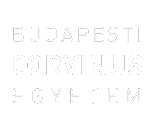David, Mark Arnold (2015) Modern IT Developments in Healthcare: A Look Into Yesterday, Today, and Tomorrow In Oncology. MA/MSc szakdolgozat, BCE Közgazdaságtudományi Kar, Közgazdálkodás és Közpolitika Tanszék. Szabadon elérhető változat / Unrestricted version: http://publikaciok.lib.uni-corvinus.hu/publikus/szd/David_Mark_Arnold.pdf
|
PDF
- Requires a PDF viewer such as GSview, Xpdf or Adobe Acrobat Reader
6MB |
Szabadon elérhető változat: http://publikaciok.lib.uni-corvinus.hu/publikus/szd/David_Mark_Arnold.pdf
Absztrakt (kivonat)
The underlying theme in this text is an investigation into how modern developments in information and communications technology can be safely, strategically and progressively implemented into the healthcare structure at large. Beyond that there is a lingering question as to why oncological care continues to lack the improvements (in terms of reducing death totals) seen in other forms of disease. The backbone of the analysis was constructed with the text assistance of Mihailidis and Bardram’s Pervasive Computing in Healthcare. PCIH definitively examines various IT technologies and their probable corresponding functions in healthcare. Notably, this thesis work is not nearly as complex as PCIH, but instead covers a three-tiered structure in the technological paradigm of yesterday (already implemented), today (partially, or entering implementation), and tomorrow (expected to be implemented). Using this structure as a rough schematic for a comprehensively digital clinical environment, particular concepts are identified and analyzed in this specific order: Health IT, data analysis, and telehealth (including wearables). This series was crafted by necessity of a logical buildup: first internal data will be collected, next data will be heavily analyzed, and finally, external data collection will be added to analysis. If external data is added before analytical tools can safely and appropriately handle ! 2! internal flows, scaling may not be manageable and data will drift towards worthlessness. The first chapter covers internal data collection tools, including computerized physician order entry (CPOE), electronic health record (EHR), and more. The second chapter offers an entry-level approach to data standards and trends and examines concepts like Big Data analysis and how it can benefit healthcare. The final chapter surveys external data collection methods and treatment outside of the typical clinical environment in telehealth and wearables. Naturally, much of the text relies on the exploration of nearly effective medical tools that still reside in a largely novelty-esque sphere, until massive study and further development can render them highly efficient and useful. Concepts for future consideration and organic shortcomings of this text are highly rooted in the fact that this paper is simply not all encompassing. Healthcare is an incredibly complex institution and change is not to be taken lightly. After all, new technologies can sometimes lead to unexpected scenarios that may cause unfortunate consequences. Therefore, to properly understand how the new and rapidly advancing tools can best fit into this system, it is first necessary for papers like this one to be released in order to initiate interest, then extremely specified investigations will follow to carefully make recommendations and suggestions based on safety and efficiency. This paper is designed to inform those less industrially knowledgeable individuals and to inspire optimism for new, promising ideas, which with many more hours of research and development, could perhaps save at least one more life today than yesterday, all while improving quality of life and convenience.
| Tétel típus: | MA/MSc szakdolgozat |
|---|---|
| Témakör: | Társadalombiztosítás, szociálpolitika, egészségügy Információgazdaság |
| Azonosító kód: | 8396 |
| Képzés/szak: | Közgazdálkodás és közpolitika szak |
| Elhelyezés dátuma: | 14 Okt 2015 13:04 |
| Utolsó változtatás: | 14 Okt 2015 13:04 |
Csak a repozitórium munkatársainak: tétel módosító lap

